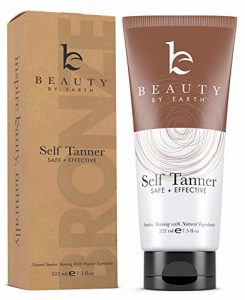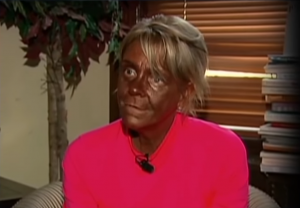So here comes the sun and, along with it, temperatures hot enough to make you want to revert to your childhood penchant for wearing your swimsuit every day of summer, all day long. The problem with bearing more skin in the summer months is that most of us want that skin to be an attractive burnished shade of copper, but everyone is more than aware of the risks of sun exposure. Though tanning your hide has been linked to skin cancer, most people still associate tanned skin with a healthy glow. If you desperately desire to be brown as a berry this summer, at least commit to using common sense.
Everyone Is Different

From the palest white to dark, rich browns that border on black, each skin tone has various levels of melanin that determine how well or if a person will tan.
Human skin comes in a veritable rainbow of colors thanks to melanin, the levels of which are programmed by genetics. That’s why some people tan easily and can retain some shades of summer year round, and others skip straight from pasty-white to lobster-red after minimal sun exposure. You likely already know where you fall on the scale of tan-ability, but accepting natural limitations is sometimes difficult for those with fair skin. Acceptance is the first step, however, to formulating a plan for a tan. Unless your skin entirely lacks melanin, you should be able to achieve some level of color darker than the shade you naturally sport all winter long. Decide to be satisfied with whatever color you can safely cultivate instead of pushing for the deepest, darkest tan, damn the consequences.
Exercise Your Options

Safely cultivating a tan in natural sunlight requires the use of sunblock, no matter how dark or light your natural skin tone is.
Other than being born with olive-toned or darker skin, there are three ways to achieve that coveted healthy glow. The first is the good old-fashioned way: sun exposure. It’s actually a good–and important–natural source of vitamin D so, unless your skin is so fair that you literally burst into flames upon exposure to sunlight, outdoor tanning is an acceptable way to darken up. Don’t flip out before you’ve read the caveat: tanning in natural sunlight absolutely requires that you use sunscreen and limit your tanning time. Yes, you will get a tan using sunscreen, but it will take some time. Medical Daily points out that the paler your natural skin tone is, the higher the SPF you’ll need. Apply one coat of sunscreen 15 to 30 minutes before you go outside, and then apply another coat about 15 to 30 minutes after being in the sun. Choose your tanning time wisely, too. Since UV rays peak in intensity at midday, 30 to 60 minutes exposure early or late in the day is your best bet. One more thing: protect your eyes, ears, and face by wearing sunglasses and a hat with a brim. The skin in these areas and even your eyes themselves are especially delicate and susceptible to UV rays.

Once thought to be safer than tanning in the sun, indoor tanning beds are just as capable of causing skin cancer with excessive use. Image via Evil Erin/Flickr
Tanning beds are another option for bronzing your skin, though they’ve become controversial since the peak of popularity in the 1980s and 90s. Initially thought to be a safer way to get a sun-kissed glow, research has since determined that excessive exposure to UV radiation from any source can cause skin cancer. The key words there are “excessive” and “can.” That’s not to downplay the risk, but only to put it in perspective and, in fact, an article published on Health Journalism revealed the results of a study that found the risk of tanning bed-use causing melanoma to be less than one percent. Additionally, Dr. Mercola touts moderate use of tanning beds as beneficial and a convenient and valuable way to get a healthy dose of vitamin D, a nutrient that can even decrease chances of other types of cancer as well as many illnesses. Remember: lotions specifically formulated for use in tanning beds are essential. They don’t have SPF, but they do help protect you from burning, and they moisturize and nourish your skin to keep it from looking like an old catcher’s mitt.

Self-tanning products offer a risk-free natural-looking tan, but they don’t last longer than a week or two and there’s no way to keep the color from rubbing off on clothing. Image via Irma Marshall/Flickr
Finally, of course, there are the self-tanners. This option is truly the only way to tan without increasing your risk of melanoma–provided you realize that most self-tanners don’t contain any protection from the sun. Slapping on some self-tanner and then heading out into the sunshine without SPF leaves your skin as vulnerable as going out naked. The biggest downside to self-tanners aside from the smell is that there is no way to keep them from staining your clothing. Even the combo products that blend lotion with self-tanner still transfer to clothing and bedding, though not as intensely. Also, some people are sensitive to DHA, dihydroxyacetone, the chemical in all self-tanners that produces the tanning effect. If you’re among those unfortunate few, you’ll develop an itchy and unsightly rash along with your faux tan.
Falling Back on Our Favorite Mantra

Don’t overdo it! A moderate approach to tanning will allow your skin will age gracefully and you’ll reduce your risk of melanoma, too. Image via CNN/YouTube
You know what we say about everything from dieting to exercise to alcohol consumption: moderation! Even when you read the studies and warnings from professionals, you should notice the use of words we pointed out above, words such as excessive, undue, extreme, may, can, and could. Overdoing most things, whether it’s sun exposure, eating cake, or even drinking too much water can be dangerous and potentially deadly. All of the uproar and fear of the sun, tanning beds, and UV rays is a bit excessive in itself. No one wants to be responsible for giving anyone permission to do harm to themselves, so the experts go overboard in steering the masses away from what could be harmful if indulged in excessively.

Image via OWN/YouTube
The answer? Grow up. Be an adult. Take responsibility for yourself. Use the common sense God gave you to determine which tanning option is right for you–or choose not to tan, if that is your preference. If you do opt to tan, do it in moderation to minimize risks and maximize positive results. True, you might not get the George Hamilton glow you want but, when your skin ages gracefully and you don’t end up with melanoma, you’ll be happy you used a moderate approach to tanning.
